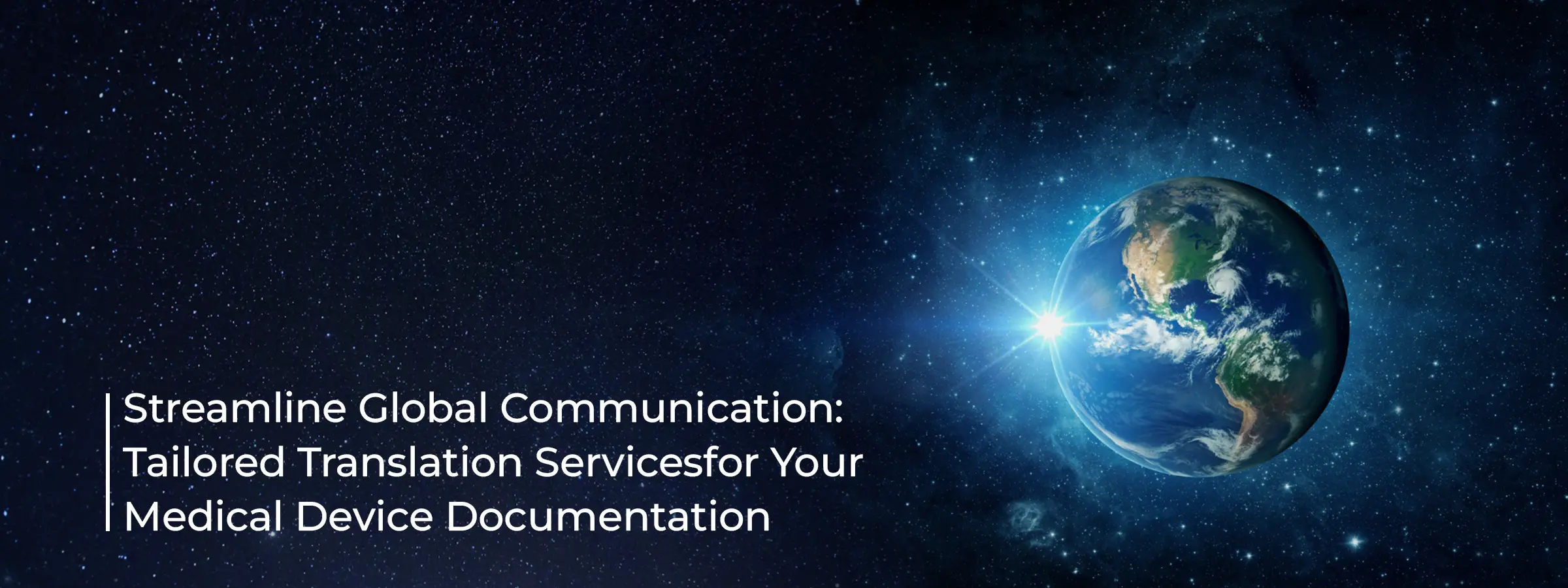
Medical device companies operate in a global market, where products must be accompanied by precise, clear, and regulatory-compliant translated materials, ensuring accurate and culturally appropriate translation of their device documentation, labelling, and software to ensure safe and effective use.
There is a range of challenges impeding the ability of Medical Device Companies to provide uniformly excellent translation services for their products across diverse markets:
• Regulatory Compliance: Each country has its regulatory framework for medical devices, which requires precise terminology and language specific to the medical field. Complying with these regulations in translation is complex and requires both linguistic and regulatory expertise.
• Technical Accuracy: Medical devices use highly specialised technical language that must be translated with exactness to prevent misinterpretation that could lead to device misuse and potential harm to patients.
• Consistency Across Multiple Languages: Maintaining consistent terminology and messaging across dozens of target languages is a significant hurdle, given the medical terminology and language structure variance.
• Cultural Sensitivity: Translated materials must be culturally sensitive to be effective in user education, considering not just language but also cultural beliefs and practices regarding healthcare.
• User Interface and Software Localization: Many medical devices come with digital interfaces that must be localised, requiring translations that not only convey the correct medical information but also fit within the design parameters of the software.
• Updating and Maintaining Translations: Medical devices often undergo updates, modifications, and improvements, which necessitate corresponding updates in all translated materials promptly to ensure ongoing compliance and efficacy.
• Quality Control and Assurance: Ensuring high-quality translations that meet all of the above requirements is essential, as errors can have serious consequences for patient safety and the company’s reputation.
• Speed to Market: Despite the complexity of translation and localization processes, there is often a need to accelerate these processes to meet product launch dates in multiple markets simultaneously.
• Cost Efficiency: Balancing the high costs associated with extensive translation and localization requirements in a way that does not compromise quality or regulatory compliance.
• Intellectual Property Protection: Ensuring that translations are accurate without exposing sensitive intellectual property to potential infringement or misuse in foreign markets.
• Documentation and Traceability: Maintaining comprehensive records of all translation processes and versions to provide required documentation to regulatory authorities.
Addressing these issues is vital to ensure that medical devices are used safely and effectively across the globe, and that the companies that produce them can thrive in an international marketplace.
To address the challenges outlined in the problem statement related to translation services for medical device companies, the following solutions can be implemented:
• Specialized Language Service Providers: Partner with Language Service Providers (LSPs) who specialize in medical devices and have a deep understanding of the medical industry's regulatory and technical requirements.
• Regulatory Expertise: Employ or consult with regulatory experts in key markets who understand the local regulations and can ensure all translations meet the necessary compliance standards.
• Glossaries and Terminology Management: Develop comprehensive glossaries of approved terminology to ensure consistency across all translations. This should involve close collaboration between LSP, technical experts, and regulatory specialists.
• Cultural Adaptation Services: Work with LSP to ensure that translations are adapted for cultural nuances and appropriateness, avoiding misinterpretations that can arise from cultural differences.
• Partner with LSP with Best-in-Class Translation Management System: Use state-of-the-art Translation Memory (TM) platform to ensure consistency, reduce translation times, and cut costs by reusing previously translated segments where appropriate.
• Software and Interface Localization: Implement a robust software localisation strategy involving LSP and functional testing to ensure that user interfaces, help files, and documentation are appropriately translated and usable in each target language.
• Continuously Update Workflows: Establish workflows that allow for the agile updating of all translated materials synchronously with product updates, ensuring that all languages are updated simultaneously and efficiently.
• Quality Control Systems: Apply stringent quality control measures, including back-translation and peer review processes, to ensure translations meet the highest quality standards.
• Efficient Project Management: Employ skilled project managers to oversee translation projects, ensuring efficient turnaround times and coordination of all necessary steps from translation to final proofing.
• Intellectual Property Safeguards: Ensure all proprietary information is protected through nondisclosure agreements (NDAs) with translation providers and secure handling of sensitive documents.
• Documentation Control: Implement robust document management systems that allow for traceability of translation versions, with clear records of updates and revisions.
• Training for International Teams: Provide comprehensive training for international teams on the importance of accurate translation and common terminology and glossaries.
• Third-Party Certification: Partner with LSP who have certifications like ISO 17100 and ISO 13485, which specify requirements for the core processes, resources, and other aspects needed for the delivery of a quality translation service.
• User Feedback Incorporation: Establish a system to collect feedback from end-users and healthcare professionals in various markets to improve and tailor translation quality to user needs continually.
By adopting these solutions, medical device companies can enhance the translation and localisation of their products, ensuring that they meet the stringent quality and regulatory demands of the global medical device market and safeguard patients' health worldwide.
© 2024 WHITE GLOBE GROUP PVT LTD